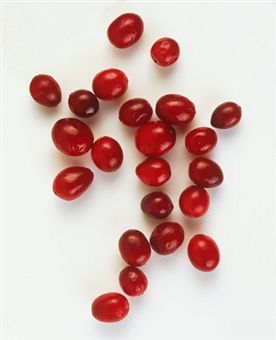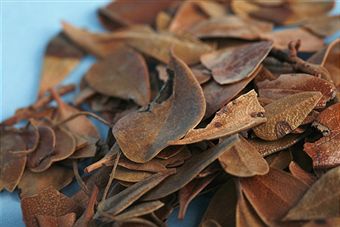Cystitis is the medical term for irritation of the bladder. It is most often the result of a bacterial infection, in which case it is also called a urinary tract infection or bladder infection. It can affect either sex at any age but is predominantly seen in adult women. At least 50% of women will have cystitis at some point in their lives while a man’s chances of getting cystitis increase with age as the prostate becomes enlarged and blocks the flow of urine from the bladder. Having the symptoms of bacterial cystitis with no actual infection is known as interstitial cystitis. While benign, interstitial cystitis can be very difficult to treat.
Symptoms
Common symptoms include:
- A feeling of pressure or discomfort in the pelvic area.
- Burning with urination, or dysuria.
- Frequent urge to urinate without much output.
- Blood in the urine, or hematuria. This will cause your urine to look pink, red, or dark brown. This symptom is more common with chemotherapy- or radiation-induced cystitis. Hematuria can also occur after intense exercise.
- Leaking of urine, or incontinence.
- Foul-smelling urine.
- Cloudy urine.
- Low-grade fever.
In young children, new occurrences of wetting accidents can be a symptom of an infection, especially if they occur only during the day or both during the day and night. Nighttime-only accidents are not considered a symptom.

Causes
Infectious cystitis is thought to be more common in women due to their shorter urethras and the closer proximity of the anus to the urethra in the female genitalia. These two things make it more likely that bacteria is introduced into the urethra and make it easier for that bacteria to make its way into the bladder.
Most bladder infections, especially in sexually active women, are caused by the introduction of various strains of E. Coli bacteria into the urethra where the bacteria rapidly spread and reproduce into the bladder. In more recent years,
Chlamydia and mycoplasma bacteria, transmitted through sexual contact, have become responsible for increasing numbers of bladder infections.
Cystitis? Get Remedies Fast!
Less commonly, cystitis may occur as a reaction to certain drugs, radiation therapy or potential irritants, such as feminine hygiene spray or spermicidal jellies.
Risk Factors
- Use of a diaphram increases a woman’s risk of cystitis. It is thought that diaphrams press on the bladder and keep it from emptying completely, giving bacteria a chance to reproduce in the stagnant urine left behind.
- Pregnant women become more prone to cystitis as the fetus grows and puts pressure on the bladder.
- Use of condoms with spermicide increases the chances of contracting cystitis.
- Not circumcising male infants may lead to cystitis in the first year of life due to a build-up of bacteria under the foreskin.
- Use of catheters, both in the hospital and at home, can increase the risk of cystitis due to the possibility of introducing bacteria into the bladder via the catheter. Long-term use of a catheter may damage the bladder tissue, which also can make you more susceptible to infection and inflammation.
Prevention Tips
Following the recommendations set forth in the Home Treatment section can also help to prevent bladder infections. Women should also be sure to wipe front to back after using the bathroom to avoid introducing bacteria from the anus into the urethra.
If you are prone to cystitis after intercourse, drink extra water beforehand and be sure to urinate immediately afterwards to flush out any bacteria from the urethra. It is also a good idea to avoid using a diaphragm or spermicide for birth control. Harsh soaps, bubble bath, perfumed sprays, and feminine products should be avoided to prevent irritation of the genital area that can lead to cystitis.
Test and Diagnosis Considerations
In men, cystitis is often a cause for concern as it is generally a symptom of an underlying condition. It may indicate an obstruction that is interfering with the proper functioning of the urinary tract.
Tests for cystitis include urine analysis and urine culture. Urine analysis is performed to determine if white blood cells, red blood cells, or bacteria are present in the urine. A urine culture determines what type of bacteria is present. Knowing the type of bacteria helps your doctor tailor your pharmaceutical treatment to achieve the best results.
Treatment Options (Herbal and Home Remedies, Pharmaceutical, Surgeries) side effects, risks, and efficacy of each options, as well as costs. if different cultures use different strategies then we should list some of those as well.
Painful and annoying, bladder infections can cause serious problems if the infection is left to spread to the kidneys, which can cause permanent damage. Luckily, treatment is simple and effective.
Home Remedies
Home treatment of a bladder infection in its very early stages can keep the infection from getting worse, and in some cases may cure the infection altogether. This is the least invasive and most cost-effective course of treatment.
Steps to take are:
- Drink enough fluids to keep your urine light yellow to clear. This will help to flush the bacteria out of the bladder and will decrease irritation in the urinary tract.
- Drink cranberry or blueberry juice. You should not drink cranberry juice if you are taking the medication warfarin (Coumadin), however, as there is a known interaction between that drug and cranberries which can lead to bleeding.
- Urinate as soon as you feel the urge. Do not “hold it” until a more convenient time.
- Do not drink alcohol, caffeine, or carbonated drinks as these can irritate the bladder and are dehydrating.
- A heating pad placed over the abdomen can help to relieve discomfort and pressure in that area.
Herbal Remedies
Many of the well-known anti-microbial remedies, such as Echinacea, do not perform well in cases of cystitis. It is therefore important to concentrate on remedies that are specifically active in the urinary tract. An infusion of fresh yarrow has had good effect in some cases. Infusion of dried yarrow and tincture of yarrow did not produce the same results, however, so it is important to find reliable sources of the fresh plant if this remedy is to be applied.
Another infusion that may give relief is as follows:
- Althaea officinalis rad. – 2 parts
- Zea Mays – 2 parts
- Agropyron repens – 2 parts
- Equisetum arvensis – 2 parts
- Arctostaphylos uva-ursi – 2 parts
- Barosma betulina – 1 part
Infuse one teaspoon of this mixture in 8 ounces of boiling water for 10 to 15 minutes and drink hot 4 to 5 times a day. This infusion combines diuretic, demulcent, and antimicrobial actions.
Dried herbs can often be found in the bulk section of health foods stores for a reasonable price. Herbs can be just as dangerous as chemical medications and some interact badly with medications, so be sure to tell your doctor if you are taking any herbal remedies or supplements.
Pharmaceutical Remedies
If your symptoms do not go away within 48 hours after beginning home or herbal treatment or if they worsen or you develop a fever with chills, belly and/or back pain, vomiting, or the inability to urinate, contact your doctor for medical treatment. The doctor will perform a urine analysis, which will show if white blood cells, red blood cells, or bacteria are present. A urine culture may also be performed to determine the type of bacteria present. If it is determined you have a bacterial infection, antibiotics will be prescribed.

Commonly prescribed antibiotics for bacterial cystitis are:
- Nitrofurantoin: do not take this medication with antacids containing magnesium- trisilicate as it binds with it and affect absorption. Common side effects are nausea, vomiting, loss of appetite, headache, dizziness, or drowsiness. This medication may also cause your urine to turn brown or dark yellow. This medication may sometimes cause a rare, yet fatal, lung infection.
- Notify your doctor immediately if you experience chest pain, shortness of breath, or an unusual and persistent cough.
- The elderly may be more susceptible to the side effects of this medication. This medication should not be taken while breastfeeding and only when necessary while pregnant and never within 2 weeks of expected due date.
- Trimethoprim-sulfamethoxazole: Side effects include nausea, vomiting, diarrhea, loss of appetite, or headache. Taking this medication on a full stomach may control nausea. Older people and people with AIDS may be more sensitive to the side effects of this medication. This medication should only be used when necessary during pregnancy and should not be used close to the expected due date.
- Amoxicillin: Common side effects are nausea, vomiting, or diarrhea. Older people may be more sensitive to the side effects of this medication. It should only be taken when necessary while pregnant or breastfeeding.
- Ciprofloxacin or levofloxacin: Common side effects include nausea, diarrhea, dizziness, lightheadedness, headache, or trouble sleeping. If you have had an allergic reaction to other quinolone based antibiotics, you should not take these medications. This medication should only be used when necessary while pregnant and not while nursing.
Symptoms generally improve with a day or two of beginning a course of antibiotics, though you will need to continue to take them for 3 to 10 days depending on your prescription. It is important to take your medication as instructed and to finish the entire course of antibiotics even if you feel better before it is finished.
Antibiotics
Those who suffer from chronic cystitis may be given a low-dose antibiotic to take on a regular basis. Some women find taking a single dose of antibiotic immediately after intercourse helps them avoid cystitis if they are prone to bladder infections after sex. If antibiotics do not give relief to chronic sufferers, some find long-term relief through cauterization of the lining of the bladder using cystoscopy.
During this procedure, a cystoscope is inserted into the urethra and threaded up into the bladder. Tools can be passed through the cystoscope into the bladder to view the lining and take samples. It is also in this way that a cauterization tool can be passed into the bladder to cauterize any actively bleeding or inflamed areas seen through the cystoscope.
Advanced Therapy
Chemotherapy related cystitis is often treated with mesna, which reduces the chance of bleeding in the bladder by protecting is lining from irritation. Headache, flushing, dizziness, drowsiness, nausea, vomiting, loss of appetite, diarrhea, constipation, sensitive skin, and flu-like symptoms are common side effects of this medication. It is important to drink at least 1 liter of liquid a day during chemotherapy to help flush irritants from the bladder. This type of cystitis generally disappears when chemotherapy and radiation are discontinued.
Pyridium can also be used to control the pain and burning associated with cystitis.
Treatment for noninfectious cystitis depends on its causes. If a chemical sensitivity is causing your symptoms a simple avoidance of the offending substances can bring relief and help prevent a recurrence. Be sure to be gentle when washing the genital area and to avoid douches and other feminine hygiene products that can cause irritation that can lead to cystitis.

No Comments